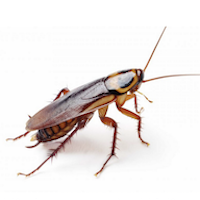Evaluation of secondary killing effect of Imidacloprid Gel Baits to control Blattella germanica (Linné 1767) (Blattaria: Blattellidae)

Submitted: 6 June 2021
Accepted: 2 January 2022
Published: 10 January 2022
Accepted: 2 January 2022
Abstract Views: 1321
PDF: 548
HTML: 101
HTML: 101
Publisher's note
All claims expressed in this article are solely those of the authors and do not necessarily represent those of their affiliated organizations, or those of the publisher, the editors and the reviewers. Any product that may be evaluated in this article or claim that may be made by its manufacturer is not guaranteed or endorsed by the publisher.
All claims expressed in this article are solely those of the authors and do not necessarily represent those of their affiliated organizations, or those of the publisher, the editors and the reviewers. Any product that may be evaluated in this article or claim that may be made by its manufacturer is not guaranteed or endorsed by the publisher.

 https://doi.org/10.4081/jear.2021.9897
https://doi.org/10.4081/jear.2021.9897




